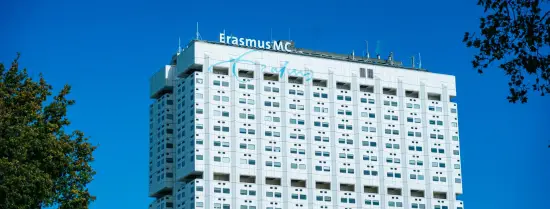
Seven bin bags of waste per intensive care patient per day, and that is just a fraction of the environmental impact of entire hospitals. Circularity is the answer, but how to achieve that without impacting the quality of healthcare?
In an interdisciplinary partnership, Nicole Hunfeld (Erasmus MC), Jan Carel Diehl (TU Delft) and Erik van Raaij (Erasmus University Rotterdam) are taking on the challenge of making the hospital as circular as possible.
The need for circularity
During the COVID-19 pandemic, hospital waste bins were full of single-use protective equipment. That became the new normal. 'Sustainability efforts were put on the back burner', Nicole Hunfeld of the Erasmus MC looks back on that period.
If that weren’t enough, the volatility in supply at that time, caused by long supply chains and harbours being closed at a moment’s notice, also stressed the need for circularity.
'Now is the time to reduce the carbon footprint - for healthy people and a healthy world'
Dr. Ir. J.C. (Jan Carel) Diehl
Inclusive Sustainable Healthcare, Industrial Design Engineering, TU Delft
National Green Deal 3.0 for Sustainable Healthcare
As soon as the COVID dust had settled somewhat, an upbeat interdisciplinary team set to work. 'Now is the time to reduce the healthcare sector’s ecological footprint – for healthy people and a healthy world', says Jan Carel Diehl (TU Delft). 'We have the combined ingenuity of TU Delft, Erasmus MC and Erasmus University, more than 15 green teams in Erasmus MC are all geared up, and the national Green Deal 3.0 on Sustainable Healthcare has just been signed. We believe that a 100% circular intensive care department is feasible by 2030, and entire hospitals by 2050.'
(Article continues after the podcast)
Switch to suppliers with reusable products
Combining expertise in medical sciences, engineering, design, policy, operations research, supply chain management and behavioural sciences, the team applies a total value chain approach following the ten Rs of circularity (refuse, rethink, reduce, reuse, recycle, etc.).
'We address product choices, user behaviour, sterilisation for multi-use and recycling', says Erik Van Raaij, (EUR). 'On the procurement side, we can for example switch to suppliers that use recyclable packaging and those who offer multi-use rather than single-use products. Erasmus MC also excels at co-developing new solutions through innovation procurement.'

'We want the entire hospital to breathe sustainability'
Nicole Hunfeld
Erasmus MC
Switching to sustainable alternatives is more complex than it seems
Switching to multi-use products may appear to be low-hanging fruit. But that’s not the case. 'If nurses now dispose of scissors after using them, we can’t expect them to spend two minutes cleaning them prior to sterile processing', Hunfeld says.
Diehl adds that an effort towards circularity may start with looking into a single product, but it always affects an entire logistics chain and the context in which they are used in a hospital. 'These off-product impacts come to light during the different ‘mapping’ methods we apply such as product and user journeys and materials flow analysis.'
The most important step towards improving sustainability is awareness
Awareness training is at the heart of the envisioned transition as it helps ensure that the correct choices are made and implemented on a daily basis. 'Take personal protective gear; there is an overuse in items such as gloves, eye protection and other protective gear', Hunfeld says. 'We address this by clarifying and refining protocols. But what we really want is for whole departments, the entire hospital, to live and breathe sustainability.'
- Professor
- More information
- Related content
